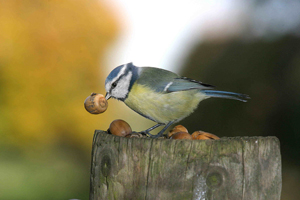Bird behaviour
Spend any time watching your gardens birds and you'll soon discover a host of different behaviours. It might be a Blackbird preening its feathers, a group of Starlings whirling about the sky in a pre-roosting flock or a Greenfinch showing a Blue Tit who is boss. For many people, watching bird behaviour is the main reason for watching birds (even if they are not aware of it)! Many different behaviours can be studied by watching garden birds and this approach can reveal a rewarding insight into their lives.
Feather and fur - how birds differ from mammals
There are notable differences between the behaviours exhibited by birds and those shown by mammals. While birds demonstrate rapid learning ability, they do not, for example, generally exhibit the diversity of 'play' behaviours seen in mammals. This particular difference is thought to have its origins in the speed with which young birds develop. Young birds often attain their adult size and weight in just a few weeks, equivalent to about 1% of their total life expectancy. The comparable figure In most mammals is closer to 30%. The accelerated rates at which birds develop may therefore rapid learning but preclude play.
Use the following links to find out about specific behaviours.
You can also find a slightly unusual anecdote about Dunnock behaviour here.







Share this page